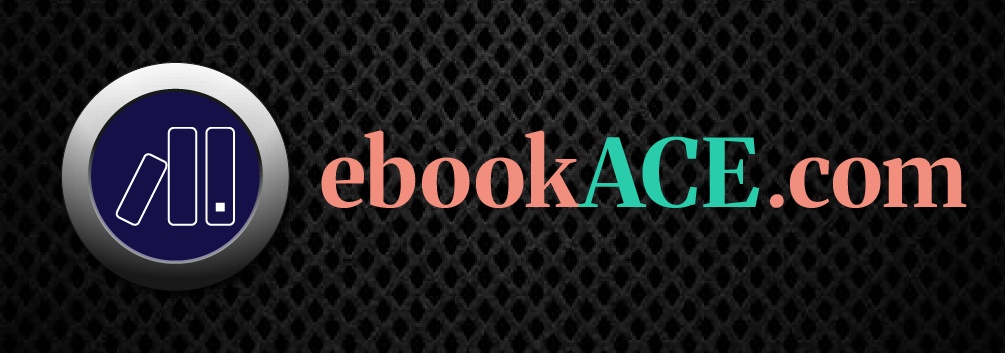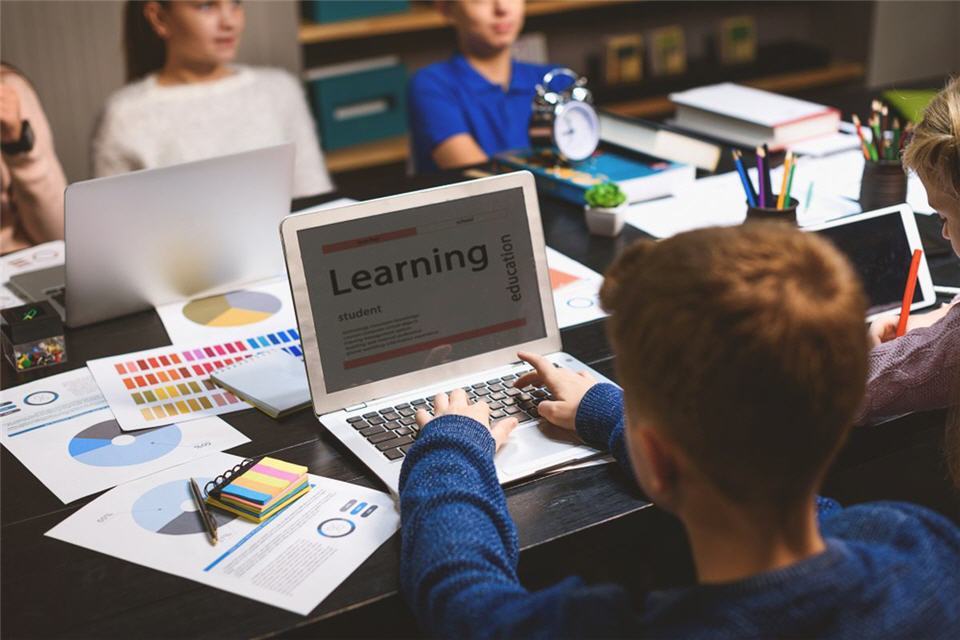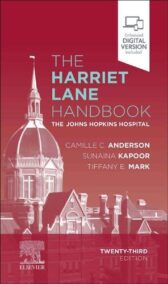The idea that schools should be built on our understanding of learning may seem oversimplified, but the reality is that far too many of them continue to use an outdated approach to teaching that ignores what we now know about human learning from research. A learner-centered focus, a solid knowledge basis, an emphasis on evaluation, and a sense of community are the four key components of educational environments created to enhance learning (source: https://nap.nationalacademies.org/read/9853/chapter/10).
These four components are all necessary for effective learning, which is the main goal of schools designed for success. Both student learning and teachers’ ongoing professional development can benefit from these elements. Schools that are set up for success attract and retain top-notch teachers. Good student achievement is what we all want in the end.
Since we think that these four principles are essential to transforming schools into productive learning communities, we look at what is known about human learning below.
Teachers in learner-centered schools are aware of and responsive to the backgrounds, beliefs, abilities, and information that each student brings to the classroom. Each child learns in a different way, and so does the amount of time it takes them to grasp new information. A child’s background knowledge and preferred learning methods are also influenced by cultural differences. When these differences are respected, each child is taught to their strengths at a pace and style that is tailored to their evolving knowledge and abilities.
The “one size fits all” factory model of education that dominates most of today’s education is significantly different from this approach to learning (source: https://www.forbes.com/sites/scottwhite/2025/03/04/the-factory-model-of-education-why-high-school-needs-a-radical-overhaul/). According to that approach, all students in a class will learn essentially the same material at the same rate if the same topic is presented to them at the same time and at the same pace. Additionally, that model makes the assumption that every student in a class will begin at the same time and end at the same time, having acquired the necessary knowledge 180 days later. Despite being administratively efficient, this assembly line approach to education is unproductive and ultimately unfair. Why? Because it demands that all kids, regardless of their learning styles, needs, histories, or abilities, adjust to the mean. While individuals who could learn more are hampered by a system that ultimately fails to push them, those who do not study at the necessary pace lose out or discontinue their education.
One-size-fits-all professional development is an inefficient way to support teacher growth because this notion also relates to how teachers learn. Schools that are organized as learning communities involve instructors in creating their own learning opportunities based on their individual talents and knowledge as well as the needs of the children they deal with, rather than asking all teachers to attend seminars.
Prioritizing the learner does not imply ignoring the content. Mastering the material is the primary focus of knowledge-centered teaching and learning. Learning focuses on the subject matter, the method of instruction, the unique abilities required to achieve it, and the definition of mastery. Each academic subject has its own content standards, resources, and abilities that serve as the foundation for high-quality instruction, whether it is the mastery of algebra, fractions, and ratios as fundamental ideas for developing mathematical understanding, an awareness of ecological systems in biology, or the appropriate use of grammar, diction, and tone in writing. Today’s content standards, which were developed by districts and states to formalize this fundamental understanding, outline these key components.
Teaching in knowledge-centered schools requires more than just knowing numbers and facts. Developing each student’s capacity to interpret existing knowledge in a topic of study is part of it. Helping students develop and apply their developing analytical skills—that is, their capacity to examine their own reasoning—is the main goal here. Students will learn how to recognize when new material makes sense, how it connects to their prior knowledge, and how to apply it. In the information era, when students are exposed to knowledge from sources far beyond the textbooks and teacher, these analytical abilities are becoming more and more crucial. In the twenty-first century, information literacy—the capacity to locate, analyze, and assess information as well as produce and disseminate it to others—has emerged as a crucial component of knowledge-centered education.
For teacher professional development, knowledge-centered learning entails concentrating on the what and why of teaching topics. All too frequently, concepts (including technology-assisted instruction, cooperative learning, and writing throughout the curriculum) are presented as part of reform initiatives without providing teachers with the chance to comprehend the need for these abilities and how they may be used in the classroom. However, knowledge gains authenticity and relevance when it is connected to the curriculum for which educators are held responsible, which inspires them to enhance their teaching.
Learner-centered instruction is made feasible in schools that are successful learning communities by instructors who are skilled in using well-designed assessment tools and procedures. Good assessment techniques give ongoing feedback on learning so that instructional activities can be modified as necessary. As formative assessments reveal students’ progress and highlight areas of understanding and difficulty, “just in time learning” becomes the standard. These resources assist educators and learners in tracking their development so that more work or novel approaches can be explored before it’s too late. Summative assessments like end-of-course or end-of-year tests have a place, but they could occur too late in the school year for the instructor to make the necessary instructional adjustments to guarantee the student is learning the required material and gaining the desired skills. Although both formative and summative elements are crucial to an assessment-centered learning environment, the former have the greatest influence over how instruction is tailored to the individual student. However, schools frequently overlook the usefulness of formative evaluation.
For teachers to learn, feedback is just as vital. To benefit the learning community as a whole, teachers must have the chance to observe, document, and reflect on their teaching and how it affects the kids they work with. When necessary, they should also solicit feedback from peers and principals.
Teachers and students do not have to learn and work alone in a learner-centered learning environment. Instead, reflection—which results from conversation, teamwork, sharing, and knowledge building in a community of learners—is essential to learning and effective teaching. Peer collaboration and knowledge sharing are essential for students. Teachers require time and opportunities to collaborate with mentors, other members of the learning community, and other school colleagues. Every successful school has established its own set of norms and support systems for the learning community. The school’s capacity to meet its learning objectives for students will be significantly impacted by the coherence of these norms and the caliber of its learning community. Though socially encouraged, knowledge is processed on an individual basis.
Beyond the confines of the school, community-centered learning has enormous potential. Only around 14 percent of a student’s time is spent in school during a calendar year; the remaining 53 percent is spent at home and in the community, and 33 percent is spent sleeping (source: https://www.educationnext.org/time-for-school-assessing-inequality-access-instructional-time-united-states/). It is obvious that any attempt to improve student learning must also take advantage of time spent outside of the classroom. Students today spend more and more time online, for example, chatting with friends or browsing the Internet when they’re not in class. Effective, community-focused schools will look for ways to make sure that extracurricular learning enhances classroom instruction. There are more chances to create learning connections the more the school is connected to the community and the home. For instance, a lot of schools are using their websites to encourage parents to be more involved in their children’s daily education.
Similar to this, professional development and teacher learning should not be carried out in a vacuum; rather, they should flourish and expand via ongoing interaction with the community of fellow students both within and outside of the classroom. Whether they take online courses and maintain connections with classmates virtually or collaborate with colleagues online for informal learning, technology gives instructors the chance to build new kinds of communities.
Kenneth Leithwood identified common characteristics of schools that have been successful in closing student achievement gaps (source: https://www.readingrockets.org/resources/resource-library/characteristics-school-districts-are-exceptionally-effective-closing). These characteristics closely align with the learning community characteristics described above. Schools that create learning communities based on these principles are outperforming demographic and socioeconomic odds that all too often predict low achievement and high teacher turnover. The list of governors consists of:
– An unwavering emphasis on each student’s academic achievement;
– A common belief among staff and instructors that they share responsibility for each student’s education;
– Regular and frequent evaluation of students’ progress toward diagnostic objectives;
– Principals who work with teacher leaders to become effective instructional leaders; and
– The ability to adjust and prolong the school day and year as necessary.
Below, we outline five essential components for change. We think that states and school districts will support the types of learning communities we referred to as “schools built for success” if they implement these methods. We think that these schools improve student achievement and overall success, strengthen teaching quality, and promote teacher retention. We advise:
– Promoting differentiated staffing and teacher cooperation;
– Teachers and principals sharing instructional leadership;
– Restructuring schools into small learning communities by redesigning and reducing their size;
– Using technology to support the new vision; and
– In close coordination with these schools, new teachers are prepared, and their ongoing professional development is supported.
Below, we look at the first four of these components; in the parts that follow, we go into greater detail on professional development and teacher preparation.
Promoting differentiated staffing and teacher cooperation
It’s time to discontinue the practice of teaching alone in remote classrooms (source: https://pmc.ncbi.nlm.nih.gov/articles/PMC9769479/). If we are aware that community-centered learning is more effective, we should implement this idea by establishing encouraging learning settings where groups of educators and school administrators collaborate to achieve it. In order to evaluate student achievement and the effectiveness of their individual and school-wide educational activities and approaches, teachers must have frequent opportunity to collaborate with their peers. This skill-building activity is supported by professional learning communities, where everyone has a voice and collegial interaction takes the place of isolation. We must transform our schools into professional workplaces if we want professional teachers working there.
Changing the one teacher/one class model of school staffing is known as differentiated staffing. It entails assigning teachers varying degrees and types of tasks according to their background and specialization. It is important to support the top educators in the district or school to take on the role of lead teachers, who can guide and counsel new instructors throughout their crucial first few years of employment. Schools should provide its top instructors with opportunity to share their knowledge and reach a wider audience since they know who they are. These lead instructors can more effectively guarantee that their school’s professional development methods center on promptly addressing each student’s unique learning demands by collaborating with colleagues in teams. This means that professional development should be based on research on effective practice.
In order to connect the university’s academic resources and knowledge with the practical skills they have acquired in the classroom, teachers should also be able to work together with their peers in higher education. But geography is no longer a barrier to the knowledge that educators may access. Telecommunications and information technologies allow teachers to share and expand their expertise through regular, online interaction with mentors, colleagues, and leaders in the field anywhere, even if their school is too small to support its own mentors or is located far from other schools or higher education institutions. Supported by this community, educators can solve current issues and imagine a future career path where a variety of role models enhance their own development.
Teachers and principals sharing instructional leadership
The days of the principal acting as the “Lone Ranger” of school reform are coming to an end, along with the era of solo teaching. Traditional top-down leadership, which was created for schools in the manufacturing era, clashes with the demands of 21st-century learning environments. Teachers’ leadership abilities are hidden and eventually wasted under one-person leadership. More significantly, if teacher leadership is not created, reforms will stall if the high-wattage principal departs, and teacher turnover will worsen as educators become weary of seeing the same old parade of new leaders bringing their own reforms.
On the other hand, schools are successful when the principal collaborates with the members of the school community to create and promote a common goal. The learning community comes together under distributed leadership with a shared commitment and accountability for maintaining progress. In the finest situations, a school learning community may work, learn, and flourish on a strong foundation created by good instructional leadership.
To coordinate learning communities, today’s principals must become proficient in a wide range of technology and abilities. Assessment literacy, or the ability to derive instructional meaning from student and school performance data, is a key component of these. These data are essential for directing school teams as they reexamine fundamental aspects of school organization, including time and resource utilization, staff roles and interactions, instructional approaches and measurements, interactions with parents and the community, and overall school culture. A sophisticated, student-focused information system built on frequent and numerous assessments of testing and other assessment data can now be supported by internet-based assessment and instructional databases. School leadership teams can have a better understanding of where student learning begins, where it succeeds, and how to collaborate in implementing effective initiatives by using these assessment databases.
Restructuring schools into small learning communities by redesigning and reducing their size
The issues of scale must be addressed via learning communities. Many schools have been permitted to grow well beyond the student populations for which they were initially intended, particularly middle and high schools. With bigger combined districts, some rural areas attract students from far locations. On the other hand, some schools are so little that they are unable to offer the kinds of assistance that both instructors and children require. The most important thing is to organize on a scale that includes educators, parents, and community members in ongoing discussions about what they want their kids to learn and grow up to be, as well as what they want their schools to be able to do to help them achieve these objectives.
Parental worries about meeting students’ emotional and developmental needs in order to help them reach their maximum academic and social potential are frequently at the heart of these discussions. They also prompt reflection on how to rethink and redistribute staffing, curriculum, time, space, and resources to meet these objectives. These days, social and emotional support are seen as crucial building blocks for academic development (source: https://pmc.ncbi.nlm.nih.gov/articles/PMC3482624/).
In order to support each child’s fullest social, emotional, and academic development, the “Comer method” or Comer School Development Program, places a strong emphasis on the whole child. We know that schools should give children stability and security in their lives and that a safe school community is crucial for all children, especially those who have been identified as “at risk.”
A societal misunderstanding regarding the aptitude of kids in challenging socioeconomic situations is addressed by the Comer principles. When the entire school is structured to support each child’s success, where respect and teamwork are valued above all else, and where scientific knowledge about child and adolescent development is applied in a methodical, practical manner, children in low-income districts—even those where the majority of students are moving in and out of homeless shelters—can achieve significantly academically.
Teenagers’ developmental requirements cannot be adequately met by big, impersonal high schools. The majority of high school students in America attend large schools; roughly 70% attend institutions with 1,000 or more students, and 50% attend institutions with more than 1,500 students. The national average public high school size is approximately 850 students. This figure is nearly double the ideal size but half of the stereotypical suburban high school (source: https://www.forbes.com/sites/tomvanderark/2021/06/04/whats-the-right-high-school-size-and-structure/). Over 50% of American high schools enroll between 500 and 2,500 students. Some of the largest high schools have student populations ranging from 3,000 to 5,000 (source: https://in.nau.edu/wp-content/uploads/sites/135/2018/08/School-Size-in-Support-of-Large-High-Schools-or-Not-ek.pdf).
The trend towards larger high schools in the U.S. is influenced by various factors, including urbanization, district consolidation, and the desire to provide diverse educational opportunities. While smaller schools still exist, especially in rural areas, the majority of high school students attend schools with enrollments exceeding 500 students.
Too frequently, teachers in these institutions see their students in brief bursts and have little opportunity to get to know them personally or engage in meaningful, long-term interactions. This intellectual and social anomie most often affects the most vulnerable pupils; far too many silently leave school to become part of the country’s school dropout rate.
Sports, the arts, extracurricular activities, and social life are more likely to engage pupils and keep them returning, even for those who stay in school. Students are increasingly complaining that school is pointless, dull, and not worth the mental strain. Approximately 40% of high school students were just going through the motions in school (source: https://www.forbes.com/sites/jamesmarshallcrotty/2013/03/13/motivation-matters-40-of-high-school-students-chronically-disengaged-from-school/).
Smaller learning centers in large schools or completely renovated small schools are alternatives that educators and legislators have developed in response to these worries. More flexible staffing, time management, and instructional strategies can be implemented in smaller schools (usually with 300–600 students) to guarantee that educators and administrators get to know their students well and act as their advocates throughout their academic careers.
A growing number of districts, particularly in urban areas, have decided to turn overcrowded, failing organizations into “small schools.” While the school building itself often stays the same, several new dynamic schools and academies are born within it. This is evident when we look at efforts across the United States to reorganize middle schools and high schools in ways that foster success. Although a school’s size by itself does not guarantee success, it does seem to play a significant role in building more productive institutions. It is feasible to establish procedures and policies that support student achievement in small schools. These elements support our prior discussion of successful learning communities in this chapter:
– Adult-student relationships are continuous and show concern and compassion;
– Parental relationships are solid and continuous;
– The leadership of the institution is widely dispersed and the organizational structure is flat;
– The majority of small schools prioritize important learning objectives over trying to be all-inclusive;
– Professional development is site-specific, entrenched, and continuous;
– The school cultivates its own culture.
– The community is actively involved in the education of its youth.
Small schools improve student achievement and allow teachers to achieve many of the other objectives of school reform (e.g., higher attendance and graduation rates, higher grades, and higher rates of course completion), according to a number of studies, some of which involve hundreds of schools and thousands of students.
Using technology to support the new vision
We have discussed in this chapter some of the ways that technology enhances current teaching and learning methods by supporting communities of learners, offering new professional development opportunities for teachers, and offering learning options for students. Just as technology increases our effectiveness in almost every area of society, it also offers opportunities to drastically improve our means of educating every child. However, just as technology’s impact and influence on every facet of contemporary life continues to grow tremendously, so too will its influence on education.
What implications does this have for education? Technology is more than just a means of completing tasks more quickly, more affordably, or more effectively. Every decision to use a technological solution has the ability to drastically alter the educational process. Maintaining focus—sticking to our vision of the academic, social, emotional, and developmental benefits we seek—is the technology challenge. Effective “e-learning” solutions enable educators to expand on the body of knowledge regarding human learning. Teaching and learning are successful (assessment-centered), empowering (learner-centered), and engaging (knowledge-centered) when they take place in networked environments (communities).
Students must possess a comprehensive set of 21st century abilities and proficiencies, including “digital age” literacy, creative thinking, effective communication, and high productivity, in order to succeed in the technological age. Teaching pupils about technology is no longer sufficient; they now need to learn using it. Furthermore, we must shift from a curriculum that is “a mile wide and an inch deep” to one that emphasizes learning for deeper comprehension, which serves as a strong foundation for future learning.
Technology can assist students get beyond intellectual roadblocks and go deeper into a subject, or it can help them comprehend and apply difficult ideas more effectively. Students can learn to see patterns, think qualitatively about physical processes, translate between frames of reference, and imagine dynamic models with the use of simulation and visualization technologies. A variety of media can address different learning styles (e.g., visual, auditory, or kinesthetic) to engage the ones that work best for a given student or subject. These curricular approaches improve success for all types of learners and may differentially enhance the performance of at-risk students. Interactivity’s stimulating elements can significantly boost students’ attention and effort.
Artificial Intelligence (AI) is profoundly influencing education, offering both transformative opportunities and significant challenges (source: https://education.illinois.edu/about/news-events/news/article/2024/10/24/ai-in-schools–pros-and-cons). AI enables tailored educational experiences by adapting content to individual student needs, enhancing engagement and learning outcomes. Educators can leverage AI to automate grading, scheduling, and communication, allowing more time for direct student interaction. AI-powered interactive whiteboards and real-time transcription tools facilitate dynamic and inclusive classroom environments. Excessive reliance on AI tools like ChatGPT for assignments may diminish students’ analytical and problem-solving abilities. AI adoption is uneven, with more affluent school districts benefiting disproportionately, potentially widening educational inequalities. A significant gap exists in AI proficiency among educators, with many lacking the necessary skills to effectively integrate AI into teaching. Experts emphasize the need for ethical AI implementation in education, advocating for transparency, data privacy, and the preservation of human agency in learning processes.
As previously said, technology can assist in fostering learner-centered and assessment-centered learning environments by enabling the continuous collection and analysis of data regarding student development in real time. This data can be merged into a student’s long-term file or reorganized into formats that allow for class-wide progress reviews. Teachers can locate lessons, resources, assessments, and other instructional aids that assist them in tailoring their education to the real requirements of their students when paired with Internet-based instructional supervisors.
Today’s schools also benefit greatly from technology, which makes it possible to establish and support learning communities for instructors. These communities can be centered solely in a school, giving educators a “space” to reflect and talk with peers they might not otherwise have much time to meet with during the hectic school day. Alternatively, they can span schools, districts, states, or even countries to offer much more expansive communities of practice. These communities are especially beneficial to new teachers who struggle to get the help they require in their local schools.
We suggest taking the following actions to turn every school into a learning community:
– Manage educational institutions in accordance with the findings of research on human learning;
– Funds should be reallocated and appropriately allocated to give educators and other school administrators the time, freedom, and tools they require to establish and maintain the small, targeted professional learning communities necessary to guarantee school success;
– Reallocate funds from big, underperforming schools to help establish tiny learning communities that will eliminate student anonymity and instructor isolation;
– Superintendents, principals, teachers, and other school leaders who exhibit the vision and ability to build schools that can meet the demands of the twenty-first century should be chosen, trained, retained, and rewarded;
– Adopt contemporary technology and utilize research results to help teachers identify the learning needs of their students and implement effective teaching techniques that allow for proper lesson customization;
– Make use of online learning communities that allow educators and learners to engage in high-quality instruction at any time and from any location; and
– Employ a variety of evaluations and accountability metrics to provide a continuous and transparent view of students’ progress toward their learning objectives.
Jeff Palmer is a teacher, success coach, trainer, Certified Master of Web Copywriting and founder of https://EbookACE.com. Jeff is a prolific writer, Senior Research Associate and Infopreneur having written many eBooks, articles and special reports.





